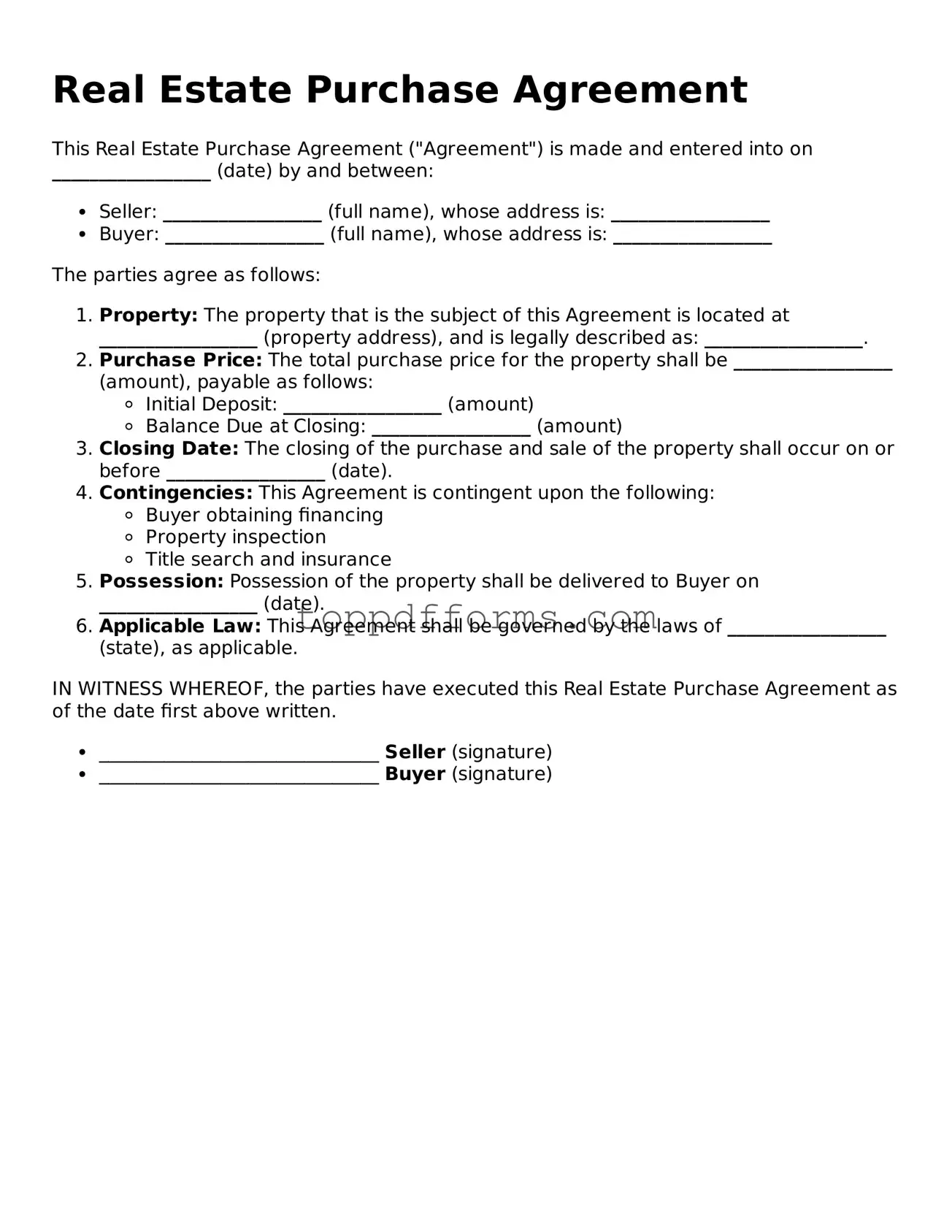What is a Real Estate Purchase Agreement?
A Real Estate Purchase Agreement is a legal document that outlines the terms and conditions under which a property is sold. It serves as a binding contract between the buyer and the seller. This agreement typically includes details such as the purchase price, the property description, closing date, and any contingencies that must be met before the sale is finalized. It ensures that both parties understand their rights and obligations in the transaction.
What should be included in a Real Estate Purchase Agreement?
Key elements of a Real Estate Purchase Agreement include the names of the buyer and seller, the property address, the sale price, and the terms of payment. Additionally, it should specify any contingencies, such as financing or inspections, that must be satisfied before closing. The agreement may also include details about the closing process, any included fixtures or appliances, and any disclosures required by law. Ensuring all relevant information is included helps protect both parties and facilitates a smoother transaction.
Can a Real Estate Purchase Agreement be modified after it is signed?
Yes, a Real Estate Purchase Agreement can be modified after it is signed, but both parties must agree to any changes. Modifications should be documented in writing and signed by both the buyer and seller to ensure clarity and enforceability. Common reasons for modifications include changes in closing dates, adjustments to the purchase price, or additional contingencies that arise during the transaction process.
What happens if one party breaches the Real Estate Purchase Agreement?
If one party breaches the agreement, the other party may have several options. They can seek to enforce the contract, which may involve going to court to compel the other party to fulfill their obligations. Alternatively, the non-breaching party might choose to terminate the agreement and pursue damages. It is essential to review the specific terms of the agreement, as it may outline the consequences of a breach and provide guidance on how to proceed in such situations.
